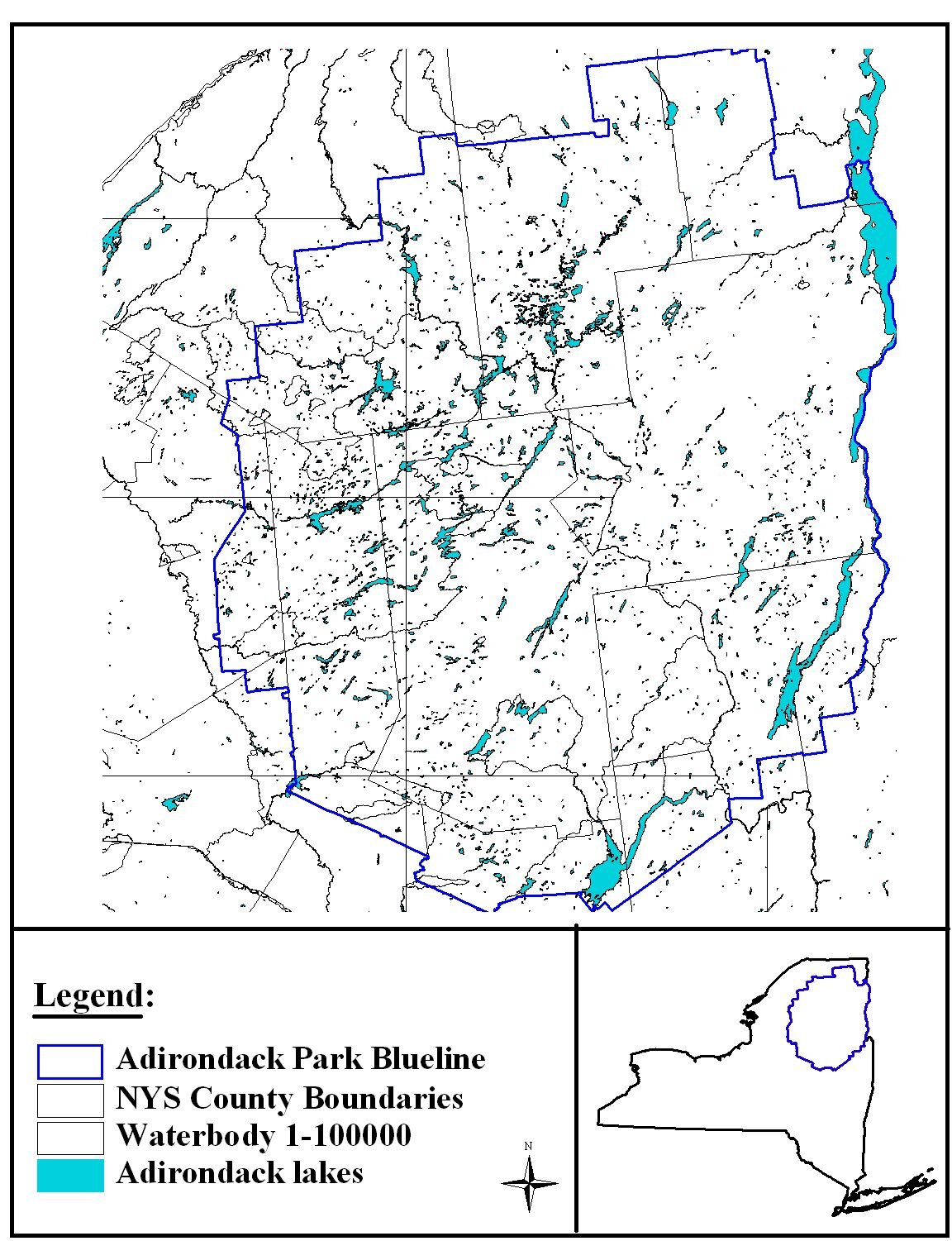Adirondack Park
New York State's Adirondack Park is a unique six-million acre mosaic of public and private lands and waterways that is larger than Yellowstone, Grand Canyon, Yosemite, Everglades, and Great Smoky National Parks combined. With thousands of lakes and ponds, the Adirondacks are prime habitat for breeding Common Loons.
Towns, Villages, and Habitats
The Park is home to about 130,000 year round human residents and up to 200,000 seasonal home-owners, and it is estimated that 7-10 million people visit the Adirondacks annually. There are 103 towns and villages in the Park, surrounded by a wide variety of habitats. From 86 acres of alpine summits in the mountains of High Peaks, to the farmland of the Champlain Valley, acidic bogs, maple/beech deciduous forests, and coniferous forests, the Adirondacks has plentiful habitat to offer.
Wildlife and Fish
Year-round fish and wildlife species include a variety of mammals, from the tiny woodland jumping mouse to moose and bears. Birds, such as bald eagles, black-backed woodpeckers, and chickadees roam the skies. The waters are swimming with fish, including brook trout and yellow perch. Numerous bird species are also seasonal Adirondack residents, such as our beloved Common Loons.


